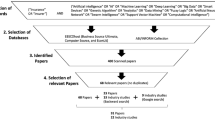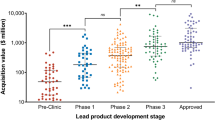Abstract
Introduction
Continuous ageing of the population coupled with growing health consciousness and continuous technological advances have fueled the rapid rise in healthcare costs in the United States and Europe for the past several decades. The exact impact of new medical technology on long-term spending growth remains the subject of controversy. By all measures it is apparent that new medical technology is the dominant driver of increases in health-care costs and hence insurance premiums.
Objective
This paper addresses the impact of medical technology on healthcare delivery systems with regard to medical practice and costs. We first explore factors affecting the growth of medical technology and then attempt to provide a means for assessing the effectiveness of medical technology.
Discussion
Avoidable healthcare cost drivers are identified and related policy issues are discussed.
Similar content being viewed by others
References
Centers for Medicare and Medicaid Services. National health expenditure data. Baltimore, MD: Centers for Medicare and Medicaid Services; 2008. http://www.cms.hhs.gov/NationalHealthExpendData/.
Nichols LM. Can defined contribution health insurance reduce cost growth? EBRI issue brief, no. 246. Washington DC: Employee Benefit Research Institute; 2002.
AdvaMed. The value of investment in health care: better care, better lives. Washington DC: Advanced Medical Technology Association; 2004. http://www.advamed.org/NR/rdonlyres/10CB7E4D-FBF4-4874-9CF7-3A85D2A0EF6B/0/medtapreport.pdf.
Rettig RA. Medical innovation duels cost containment. Health Affairs 1994:15 (summer).
Dietlein M, Weber K, Gandjour A, Moka D, Theissen P, Lauterbach KW, et al. Cost-effectiveness of FDG-PET for the management of solitary pulmonary nodules: a decision analysis based on cost reimbursement in Germany. Eur J Nucl Med 2000;10:1441–56.
Dietlein M, Weber K, Gandjour A, Moka D, Theissen P, Lauterbach KW, et al. Cost-effectiveness of FDG-PET for the management of potentially operable non-small cell lung cancer: priority for a PET-based strategy after nodal-negative CT results. Eur J Nucl Med 2000;11:1598–609.
Anderson GF, Frogner BK, Johns RA, Reinhardt UE. Health care spending and use of information technology in OECD countries. Health Affairs 2006;25:819–31.
Newhouse JP. Medical care costs: how much welfare loss? J Econ Perspect 1992;6:3–21.
Cutler DM, Rosen AB, Vijan S. The value of medical spending in the United States, 1960–2000. N Engl J Med 2006;355:920–7.
Conflict of Interest
None.
Author information
Authors and Affiliations
Corresponding author
Rights and permissions
About this article
Cite this article
Goyen, M., Debatin, J.F. Healthcare costs for new technologies. Eur J Nucl Med Mol Imaging 36 (Suppl 1), 139–143 (2009). https://doi.org/10.1007/s00259-008-0975-y
Published:
Issue Date:
DOI: https://doi.org/10.1007/s00259-008-0975-y




